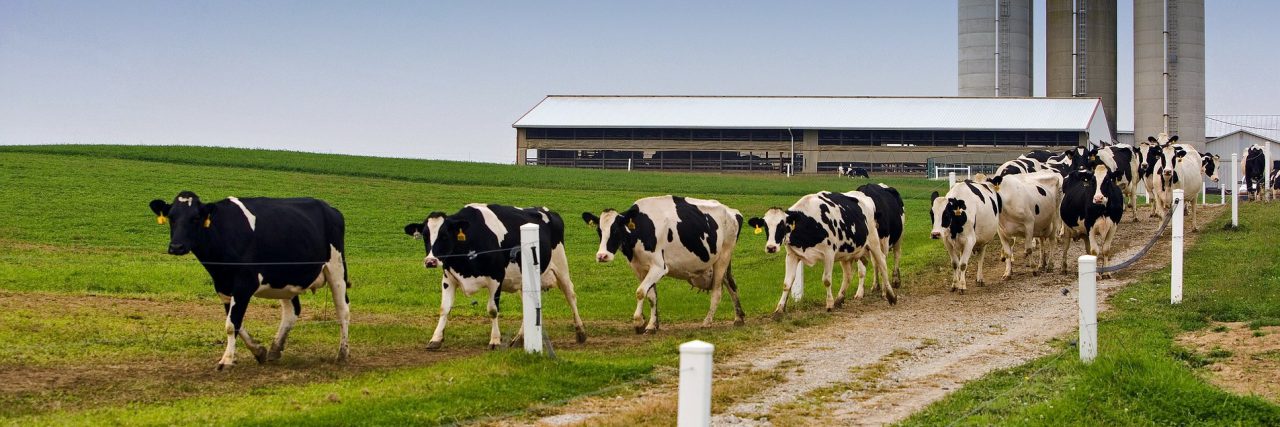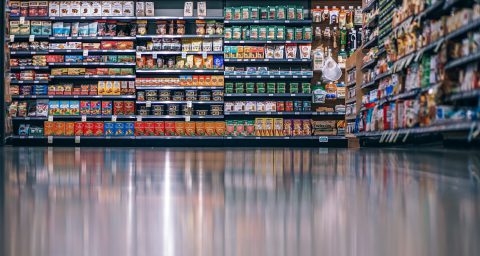Plant-based milk alternatives have been around for decades, but gone are the days where they were considered a niche market. Over the past 10 years, plant-based milk alternatives have surged in popularity, with nearly a quarter of Brits, and 30% of women and 16-24 year olds, now using plant-based milk alternatives (1).
The plant-based milk alternative market is currently valued at 260 million GBP and accounts for 8% of milk sales (1). With soy previously dominating the market growth is now being driven by oat, almond and coconut milk, which have increased significantly in the last two years.
The plant-based milk alternative market is still in its infancy, but with sustained shifts in consumer trends the disruption of the dairy industry is expected to continue. With the UK considered a leader in the dairy alternative movement (2), it’s plant-based milk alternative market is forecast to more than double by 2025 to 565 million GBP (3).
The trend is seemingly driven by the increasing popularity of vegan, vegetarian and flexitarian diets. Typically, vegan and vegetarian consumers report animal welfare as a primary motive. However, consumer studies show that for those who are not strictly vegetarian/vegan, but adopting a more ‘flexitarian’ approach, the primary motives are to reduce their environmental impact and support sustainability (4,5). Furthermore consumers also cite a healthy, balanced diet as a motivator when selecting plant milks, referring to nutrition, weight management or allergies/intolerances.
Additional drivers include consumers’ enjoyment of the diversity of plant-based milks available (6), with supermarkets and coffee shops now offering a range of milk alternatives as standard in addition to more practical considerations, such as increased versatility and longer shelf life. Plant-based milks last longer than dairy milk once opened and many are shelf-stable, meaning they do not need refrigeration until opened. Never before have the potential advantages of this been more apparent than during the recent Covid-19 pandemic. As government advice to stay home and long queues in supermarkets may increase consumer interest in shelf-stable products, the closure of restaurants, schools and businesses has led to substantial wastage of fresh foods such as milk. Many producers cannot sell to their normal outlets, and even charities do not have the capacity to store and distribute the amount of fresh food available (7).

Risks and opportunities
The increasing consumption of plant-based milks entails a number of risks, to which dairy farmers and end consumers may be the most vulnerable. Dairy UK, the sector’s leading trade body, counts 50,000 jobs supported by dairy production across 14,000 farms, and a further 27,000 jobs in milk processing (8). This translates to nearly 15% of the UK’s agricultural output. For some farms, reduced demand will lead to jobs and even businesses being lost, with negative impacts on local and national economies. Moreover, dairy farming plays a pivotal role in land management, and reduced grazing would require adjustments to land stewardship strategies.
Plant-based milk alternatives may also present risks to consumers. Dairy products are rich in calcium, iodine, and protein, and fortified with vitamin D, all of which are essential to a healthy diet. While not exclusively provided by dairy products, dairy is a key source of these nutrients, with milk and milk-products providing for example 38% of iodine intake in adults (9). Consequently, the movement toward reducing dairy in the younger generation potentially represents a ticking time bomb for osteoporosis and thyroid dysfunction, as many do not supplement their diets with alternative nutrient sources.
While the increasing popularity of plant-based milks presents a number of risks, it also presents the possibility of a more environmentally sustainable food system. On average, producing a glass of dairy milk emits almost three times more greenhouse gases than producing the same amount of plant-based milk, while also using nine times more land (10).
However, in terms of both emissions and the use of other natural resources, not all plant-based milks are created equal. While all plant-based milk alternatives are associated with lower greenhouse gas emissions, lower water use and lower land use than dairy milk, certain varieties such as almond and rice milk require substantially more water to produce than others such as soy or oat milk (11).
This may be good news for British farms. While many plant-based milks are produced using ingredients to which our climate is not conducive, oats, one of the most sustainable options, are already an important UK crop. While current market leaders mainly source their oats from elsewhere in Europe (12), smaller producers such as Glebe Farm Foods in Cambridgeshire have demonstrated the feasibility of manufacturing oat milk using local ingredients (13).
Potential policy solutions
In light of the trend in plant-based milk alternatives, the UK dairy industry may need investment to support economic diversification. Agricultural subsidies could be restructured to encourage transitions to alternative land use, such as renewable energy initiatives, growth of sustainable crops (e.g. oats), or local conservation and wildlife management activities including natural regeneration.
On the Scottish borders, the Shanks family farm are setting an example of diversification to increase outputs and resilience. In addition to the 2 million litres of milk they produce each year, Standhill Farm also produces clean electricity, renewable heat, and 300 tonnes of tomatoes. Fermentation by-products from environmentally-damaging slurry are used to grow tomatoes and generate renewable energy to power the farm, with any excess going to the national grid (14). Although the installation of new infrastructure can be financially challenging, government subsidies to support diversification efforts could ease the financial burden on farmers. In addition, policies should protect the primary production workforce, who may require training in new techniques or other areas of agriculture, to ensure sustained employability during and after diversification activities.
Policy solutions must also safeguard consumers from the effects of potential micronutrient insufficiencies. Although many products are fortified with calcium to match the profile of cow’s milk, other micronutrients found in dairy are often overlooked (15). Some brands (e.g. Oatly, Marks & Spencer) fortify their products with micronutrients such as iodine and vitamin B12, but these are in the minority. The implementation of mandatory fortification for micronutrients such as iodine, vitamin B12, iron, and vitamin D could help to ensure that dairy-free milk alternatives are a nutritionally adequate alternative to cow’s milk. Furthermore, regulations surrounding organic labelling and fortification of plant-based milk alternatives could be relaxed to allow organic products to be fortified with important micronutrients, an approach which is currently not permitted (16).
It is clear that the increasing trend towards plant-based milk alternatives, and dairy-free alternatives in general, introduces potential risks across the food system from consumers to the dairy industry. However, considered policy support and pre-emptive shifts in agricultural and governmental practices could potentially mitigate some of the potential harm whilst supporting a more sustainable shift within the food system. Perhaps, as this trend appears to be sticking around, we should be milking it for all it is worth.
About the authors
Chloe Clifford Astbury (University of Cambridge), John Ferguson (University of Nottingham), Anna Krettmann (University of Leeds), Lauren McGale (University of Liverpool) and Martha Redway (University of Glasglow) came second place in the 2019 GFS Policy Lab on emerging food trends and their impact on the food system.
References
- Mintel report, 2019. https://www.mintel.com/press-centre/food-and-drink/milking-the-vegan-trend-a-quarter-23-of-brits-use-plant-based-milk
- Deloitte report, 2019. https://www2.deloitte.com/content/dam/Deloitte/uk/Documents/consumer-business/deloitte-uk-plant-based-alternatives.pdf
- The Vegan Society, 2020. https://www.vegansociety.com/news/market-insights/dairy-alternative-market/european-plant-milk-market/uk-plant-milk-market
- Haas, Schnepps, Pichler, Meixner, 2019. https://www.mdpi.com/2071-1050/11/18/5046/pdf
- Vainio, Niva, Jallinoja, Latvala (2017). https://www.ncbi.nlm.nih.gov/pubmed/26952560
- ProVeg – Plant Milk report (2019) https://proveg.com/plant-based-food-and-lifestyle/vegan-alternatives/plant-milk-report/
- https://www.nytimes.com/2020/04/11/business/coronavirus-destroying-food.html
- https://www.dairyuk.org/wp-content/uploads/2018/10/THE-WHITE-PAPER-2017.pdf
- Bouga, M., Lean, M., & Combet, E. (2018). Contemporary challenges to iodine status and nutrition: The role of foods, dietary recommendations, fortification and supplementation. Proceedings of the Nutrition Society, 77(3), 302-313. doi:10.1017/S0029665118000137
- https://science.sciencemag.org/content/360/6392/987
- https://www.bbc.com/news/science-environment-46654042
- https://www.oatly.com/uk/products/oat-drink-semi; https://www.alpro.com/uk/products/drinks/oat-drinks/oat-unsweetened/
- https://www.glebefarmfoods.co.uk/
- http://www.standhillfarm.co.uk/
- Bath et al., 2017, British Journal of Nutrition, 118(7), 525-532 (https://www.ncbi.nlm.nih.gov/pmc/articles/PMC5650045/)
- Oatly Sustainability Report, 2018 (https://www.oatly.com/uk/sustainability-report)



